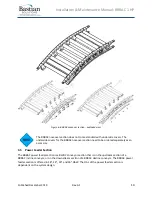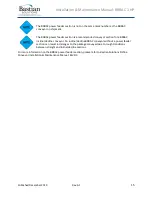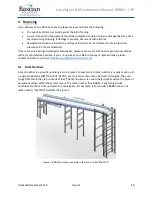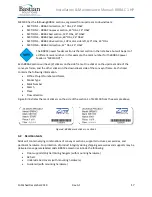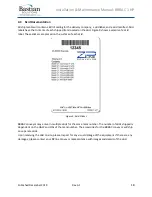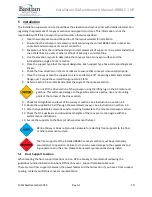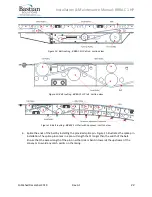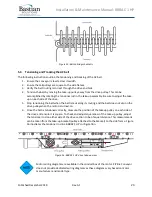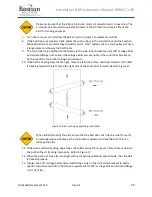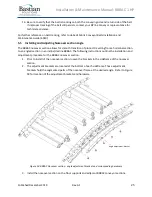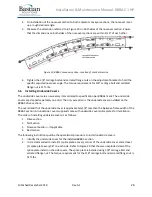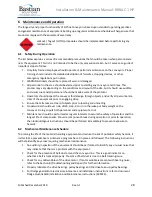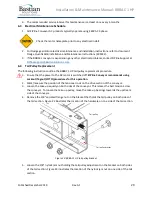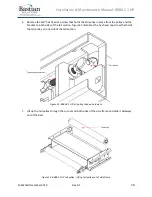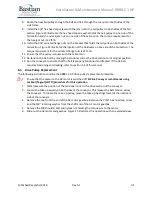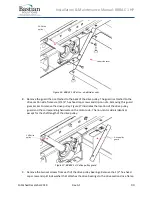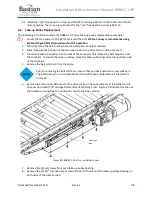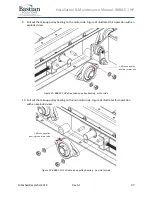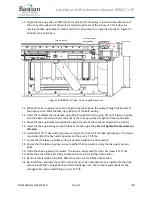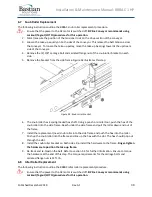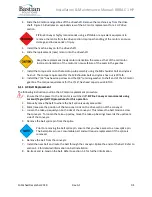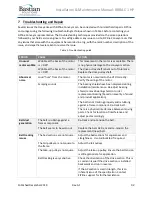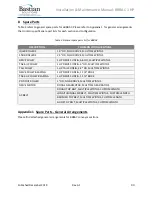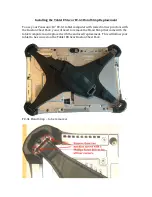
Installation & Maintenance Manual: BRBAC 1 HP
Published December 2019
Rev.A1
28
6
Maintenance and Operation
The longevity and proper functionality of ZiPline Conveyor is based upon standard operating practices
and general maintenance of equipment. Setting up a regular maintenance schedule will help ensure that
products comply with the equipment’s warranty.
Lockout / Tagout (LOTO) procedures should be implemented before performing any
maintenance.
6.1
Safety During Operation
The list below explains a series of recommended precautions that should be taken when personnel are
near the equipment. This list is not intended to be the only precautions taken, but it serves as a guide of
important steps to follow.
1.
Only fully trained employees should operate or perform maintenance on the conveyors. Proper
training should include the detailed description of fail-safes, stopping devices, or other
emergency regulations put in place.
2.
WARNING stickers should be replaced if worn or damaged.
3.
All personnel in the area should be alerted prior to starting any conveyor at all times. This
process may vary depending on the conditions and layout of the site, but it should use audible
and visual cues and all personnel should be made aware of the protocol.
4.
Operators should inspect the conveyor for damage, foreign objects, and verify all personnel are
clear of the equipment prior to engaging drive.
5.
Ensure that all areas are clear of objects prior to loading and unloading.
6.
No personnel should ever ride, climb, step, sit on, or otherwise put body weight on the
conveyor. Doing so puts both personnel and equipment at risk.
7.
Maintenance should be performed at regular intervals to assure the safety of operators and the
longest life of components. Should a component break during operation or prior to operation,
then lockout/tagout instructions should be performed immediately to prevent exposure to
hazards.
6.2
Mechanical Maintenance Schedule
To prolong the life of the material handling equipment and reduce the risk of potential safety hazards, it
is vital that a preventative maintenance program be set in place and followed. The following instructions
will help identify key areas requiring mechanical maintenance.
1.
An auditory inspection of the equipment should be performed to identify any unusual noise that
may indicate that there is a problem with the equipment.
2.
Check for the presence of belt dust around the conveyor line. This is a good indicator on
whether a belt is tracked properly. Presence of belt dust is due to a belt tracking issue.
3.
Check for any odd wobbles of the drive motor. If motor wobble is present with bearing noise,
refer to the Section 8 (Troubleshooting and Repair) for further information.
4.
Properly lubricate the drive bearings, pulley bearings and the drive take-up pulley bearings.
5.
For Dodge gearmotor electrical maintenance and installation instructions, refer to document
Dodge Quantis RHB Installation and Maintenance Instructions (499322).
Summary of Contents for BRBAC 1 HP
Page 1: ...Installation and Maintenance Manual Model BRBAC 1 HP Effective December 2019 Rev A1...
Page 44: ...Installation Maintenance Manual BRBAC 1 HP Published December 2019 Rev A1 44...
Page 45: ...Installation Maintenance Manual BRBAC 1 HP Published December 2019 Rev A1 45...
Page 46: ...Installation Maintenance Manual BRBAC 1 HP Published December 2019 Rev A1 46...
Page 47: ...Installation Maintenance Manual BRBAC 1 HP Published December 2019 Rev A1 47...

